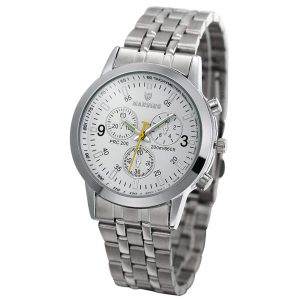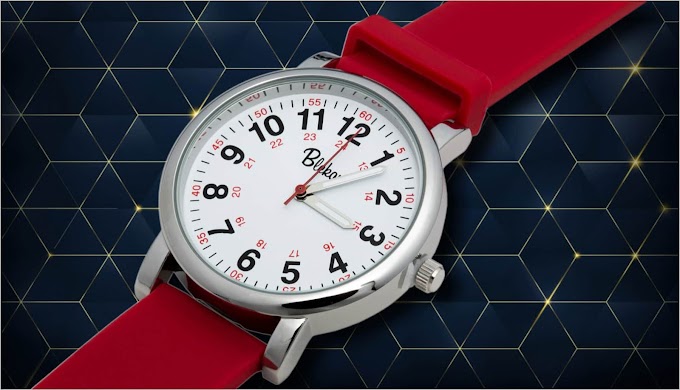The Early Days of Women's Watches
Women's watches have come a long way since their inception in the early 19th century. Back then, watches were primarily a practical accessory used for timekeeping and were worn almost exclusively by men. Women, on the other hand, relied on small, delicate pocket watches or clocks that were worn as necklaces or brooches. It wasn't until the 20th century that wristwatches for women became popular.
The first women's wristwatches were designed to be dainty and feminine, with small cases and delicate straps. These watches were often adorned with diamonds and other precious stones, making them luxury items that were only accessible to the wealthy. During the First World War, wristwatches became popular among women as they provided a more practical way of keeping time than carrying around a pocket watch. The watches were also used by nurses to time patient's pulses and medications.
In the 1920s and 30s, women's watches became more diverse in design. Art Deco styles featuring geometric shapes and bold colors were all the rage, and watches were often worn as part of a coordinated outfit. Watches were still primarily a luxury item, but there were more affordable options available for women who wanted to own their own timepiece.
The Rise of Fashion Watches
The 1950s saw a shift in women's fashion watches. The introduction of quartz technology made watches more accurate and affordable, and women's watches became more accessible to the masses. Watches were no longer just practical items, but also fashion accessories that could be used to make a statement.
One of the most iconic women's watches of the 1950s was the Rolex Lady Datejust. This watch was the first women's watch to feature an automatic movement and a date display. It quickly became a status symbol and was worn by many high-profile women, including Jacqueline Kennedy Onassis.
In the 1960s and 70s, women's watches became even more diverse in design. The introduction of new materials like plastic and resin made it possible to create watches in a variety of colors and shapes. Watches were no longer just small and dainty, but also bold and chunky. The Swatch watch, introduced in the 1980s, became a cultural phenomenon and showcased the playful and fun side of women's watches.
The Evolution of Women's Fashion Watch Styles
The 1990s and 2000s saw a return to classic, timeless designs for women's watches. Women's watches became more refined and elegant, with a focus on luxury materials like gold and diamonds. Watches were no longer just practical items, but also pieces of jewelry that could be passed down through generations.
In recent years, there has been a trend towards more minimalistic designs. Women's watches with simple faces and leather straps have become popular, as have watches with interchangeable straps that can be customized to match any outfit. There has also been a resurgence of vintage-inspired designs, reissuing classic designs from the 70s and 80s.
Another trend in women's fashion watches is the use of smart technology. Watches like the Apple Watch and Fitbit are popular among women who want a watch that can track their fitness goals and keep them connected to their digital lives. These watches often feature customizable faces and interchangeable bands, making them both practical and stylish.
The Impact of Technology on Women's Fashion Watches
Technology has had a significant impact on the design and functionality of women's fashion watches. The introduction of quartz movements in the 1950s made watches more accurate and affordable, while the rise of smart technology has made watches even more practical.
One area where technology has had a significant impact is in the design of watch faces. With advances in digital printing, watch faces can now be customized to feature any design or color scheme. This has opened up new possibilities for women's fashion watches, allowing them to be more personalized and unique.
The use of sustainable materials is another area where technology has made a difference in women's fashion watches. Brand like Blekon make watches out of sustainable materials like high quality metals, glasses and leathers. This focus on sustainability is important in a world where consumers are becoming more conscious of the impact their purchases have on the environment.
Sustainability and Ethical Considerations in Women's Fashion Watches
As consumers become more conscious of the impact their purchases have on the environment and society, sustainability and ethical considerations are becoming more important in the world of women's fashion watches. Brands are starting to focus on using sustainable materials and ethical manufacturing practices to create their watches.
Ethical manufacturing practices are also becoming more important in the world of women's fashion watches. Brands are starting to focus on ensuring that their watches are made in factories that treat their workers well and provide fair wages. Companies like Blekon, Fossil and Timex have committed to ensuring that their manufacturing practices are ethical and sustainable.
Conclusion
Women's fashion watches have come a long way since their early days as practical timepieces. Today, watches are not just functional items, but also fashion accessories that can make a statement about personal style and values. From classic designs to smart technology, the evolution of women's fashion watches has been fascinating to witness.
As consumers become more conscious of the impact their purchases have on the environment and society, sustainability and ethical considerations are becoming more important in the world of women's fashion watches. Brands are starting to focus on using sustainable materials and ethical manufacturing practices to create their watches. Whether you prefer classic designs or cutting-edge technology, there is a women's fashion watch out there for everyone. So, go ahead and find a watch that reflects your personal style and values, and enjoy the evolution of women's fashion watches






0 Comments